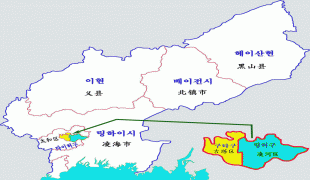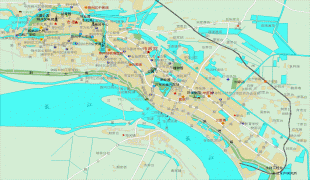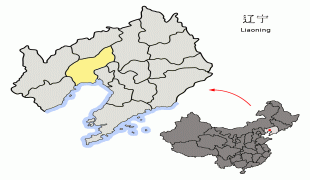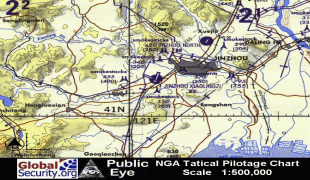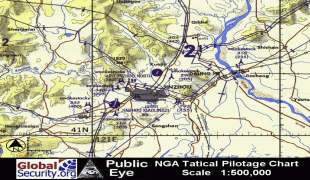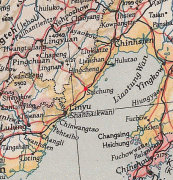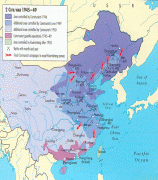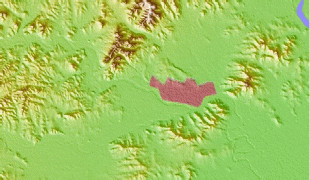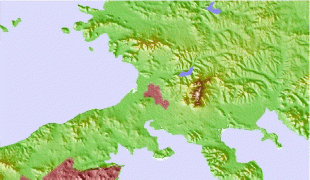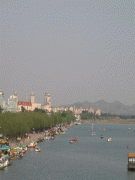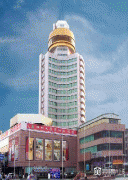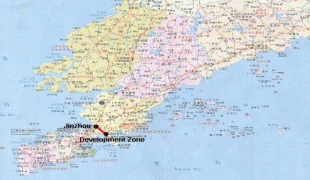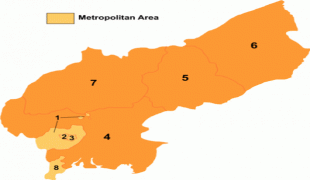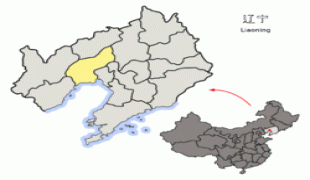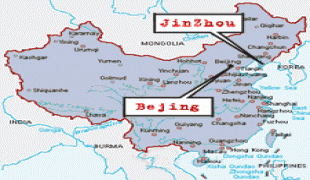Jinzhou
It is the fifth-most populous city in Liaoning, with a population of 2,703,853 (2020 census), of whom 1,524,362 reside in the built-up (or metro) area encompassing the 3 urban urban districts and Linghai City largely being conurbated. The total area under the jurisdiction of Jinzhou is 9989 km², most of which is rural.
Jinzhou is an ancient city with over a thousand years of history. Originally known as Tuhe, it was part of Yan in the Warring States period. Under the Qin dynasty, the majority of what is now Jinzhou became part of Liaodong Commandery. It was part of Changli Commandery in the province of Youzhou during the Han dynasty and Three Kingdoms periods, but fell under the jurisdiction of Yingzhou in the Beiwei, Dongwei, and Beiqi periods, before becoming part of Liucheng Commandery and then Yan Prefecture during the Sui dynasty and Tang dynasty. During the Tang, it was the seat of the Andong Protectorate.
The name "Jinzhou" came into use in the Liao dynasty, when it belonged to Zhongjing prefecture. In the Jin dynasty, it was part of Dongjing Prefecture and Beijing Prefecture. It belonged to Liaoyang Xingzhongshu in the Mongol Empire/Yuan dynasty and to Liaodong township in the Ming dynasty. It was ruled by Tianfu during the Qing dynasty, when its name was changed from Jinzhou to Jinxian. It is also known in English as Chinhsien and Chinchow.
During the Republican period, Jinzhou was attached to Liaoning Province. When the Chinese Civil War resumed in 1945, Jinzhou was the site of a major battle between the Communist and Nationalist forces, since it is where the main route from Manchuria through Shanhai Pass enters central China. Its capture on November 22, 1945, by Nationalist forces under Du Yuming forced the Communists to agree to a temporary ceasefire that lasted several months.
During the Liaoshen campaign, in which the People's Liberation Army began to consolidate control of Northeast China, refugees tried to escape to the city to flee further south. The Republic of China Army, under orders from Chiang Kai-shek not to allow refugees to escape the region, shot at them as they tried to cross the Daling River 30 kilometers north of the city. The Communists commanded by Lin Biao captured the city in September 1948.
After the establishment of the People's Republic of China in 1949, Liaoxi Province was founded and Jinzhou became its provincial capital. Jinzhou came back under the administration of Liaoning Province in 1954, when Liaoxi and Liaodong provinces re-merged.
Map - Jinzhou
Map
Country - China
 |
 |
| Flag of China | |
Modern Chinese trace their origins to a cradle of civilization in the fertile basin of the Yellow River in the North China Plain. The semi-legendary Xia dynasty in the 21st century BCE and the well-attested Shang and Zhou dynasties developed a bureaucratic political system to serve hereditary monarchies, or dynasties. Chinese writing, Chinese classic literature, and the Hundred Schools of Thought emerged during this period and influenced China and its neighbors for centuries to come. In the third century BCE, Qin's wars of unification created the first Chinese empire, the short-lived Qin dynasty. The Qin was followed by the more stable Han dynasty (206 BCE–220 CE), which established a model for nearly two millennia in which the Chinese empire was one of the world's foremost economic powers. The empire expanded, fractured, and reunified; was conquered and reestablished; absorbed foreign religions and ideas; and made world-leading scientific advances, such as the Four Great Inventions: gunpowder, paper, the compass, and printing. After centuries of disunity following the fall of the Han, the Sui (581–618) and Tang (618–907) dynasties reunified the empire. The multi-ethnic Tang welcomed foreign trade and culture that came over the Silk Road and adapted Buddhism to Chinese needs. The early modern Song dynasty (960–1279) became increasingly urban and commercial. The civilian scholar-officials or literati used the examination system and the doctrines of Neo-Confucianism to replace the military aristocrats of earlier dynasties. The Mongol invasion established the Yuan dynasty in 1279, but the Ming dynasty (1368–1644) re-established Han Chinese control. The Manchu-led Qing dynasty nearly doubled the empire's territory and established a multi-ethnic state that was the basis of the modern Chinese nation, but suffered heavy losses to foreign imperialism in the 19th century.
Currency / Language
| ISO | Currency | Symbol | Significant figures |
|---|---|---|---|
| CNY | Renminbi | ¥ or 元 | 2 |
| ISO | Language |
|---|---|
| ZH | Chinese language |
| UG | Uighur language |
| ZA | Zhuang language |







